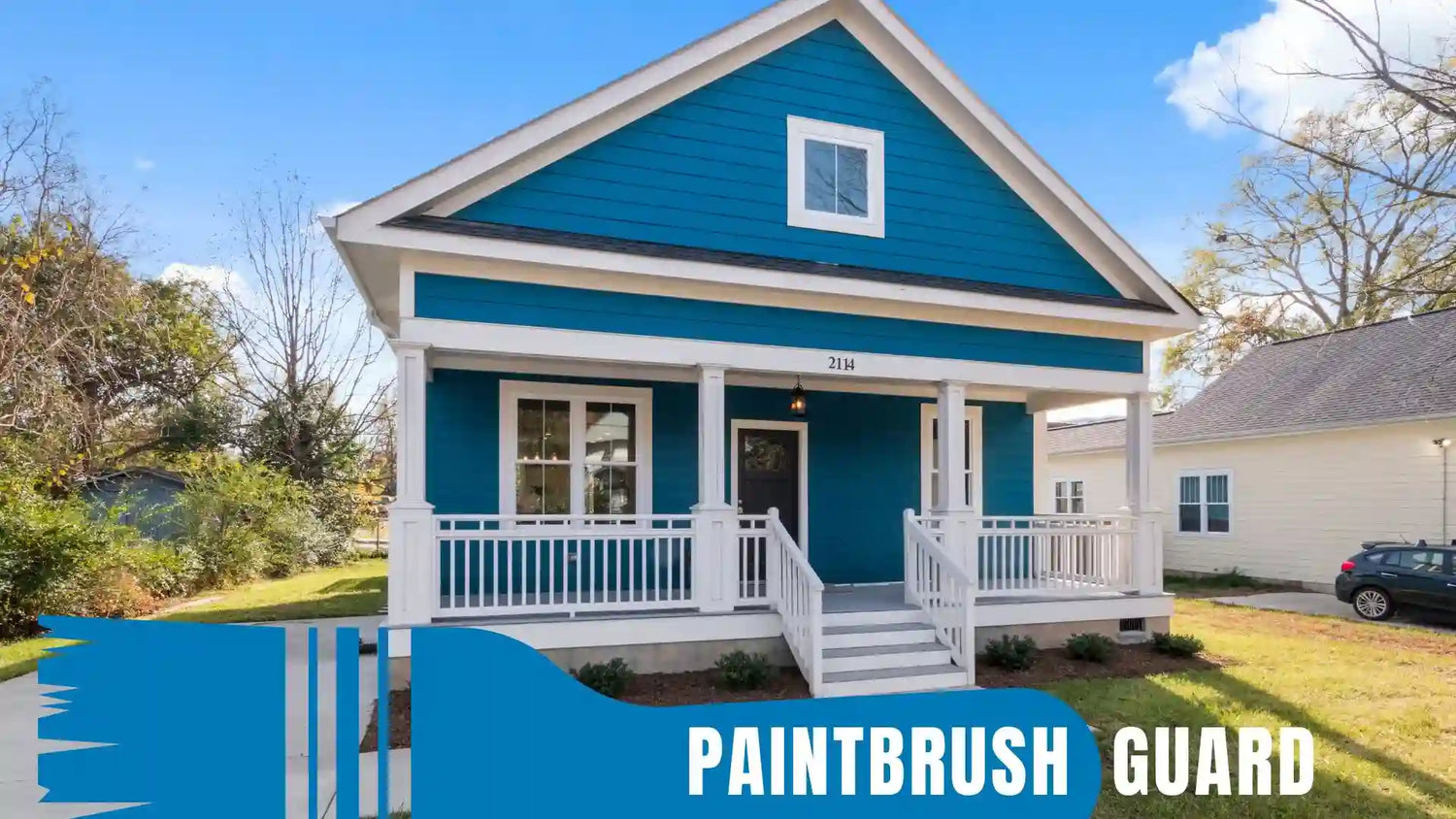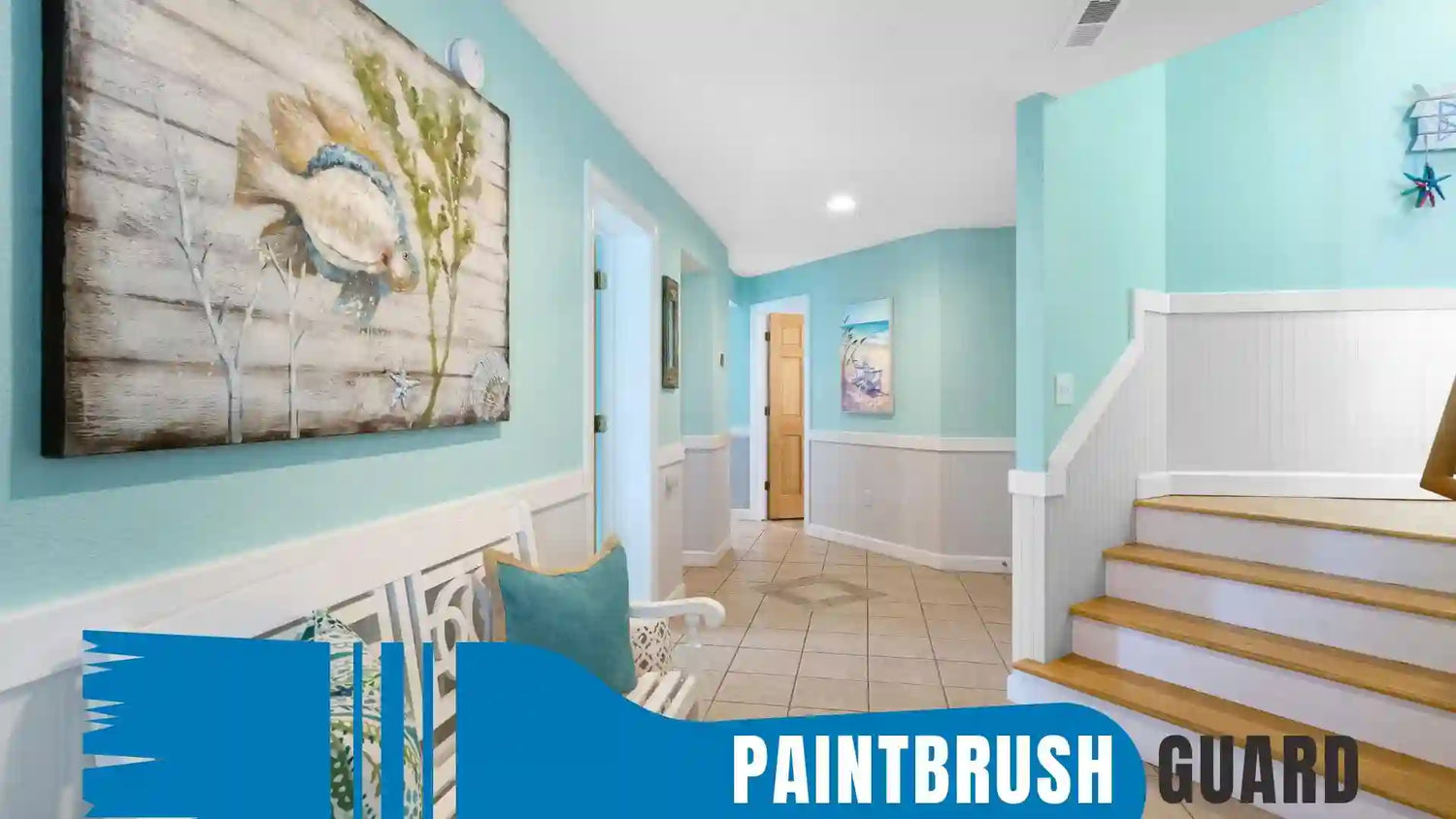Exterior deck painting revitalizes your outdoor space, enhances curb appeal, and protects your deck from weather damage.
Proper preparation is critical for a durable, professional-quality exterior deck painting result, preventing issues like peeling, cracking, or uneven finishes.
This in-depth guide covers every aspect of preparing for exterior deck painting, from inspection to priming, ensuring your project succeeds.
Whether you’re a DIY homeowner or hiring professionals, these steps will help you achieve a flawless exterior deck painting outcome.
This is one part of a complete exterior house painting guide.
Why Prep Matters for Exterior Deck Painting
Decks endure heavy foot traffic, UV rays, rain, and temperature swings, making thorough preparation essential for exterior deck painting.
Without it, paint may fail to adhere, leading to premature wear or costly repairs. Proper prep ensures the paint bonds well, withstands the elements, and maintains a polished look, maximizing your investment.
By addressing all prep aspects, you set the stage for a successful exterior deck painting project that enhances your outdoor living space.
Check out this article on 4 Paint Types for Exterior Deck Painting High Traffic Areas
Inspect Deck for Exterior Painting Readiness
Before starting exterior deck painting, inspect the deck thoroughly to identify issues that could affect the outcome. Check for loose or splintered boards, warped wood, or cracked surfaces, common in older decks.
Look for peeling paint, mildew, or algae, which indicate moisture or poor prior maintenance. For metal railings, inspect for rust. If your deck is made of pressure-treated wood, ensure it’s fully cured (typically 6-12 months after installation) to accept paint.
A detailed inspection catches problems early, ensuring effective exterior deck painting.
Loose boards or nails should be secured or replaced. For warped or cracked wood, consider replacing damaged sections to ensure a stable surface for exterior deck painting. Structural integrity is crucial for a uniform finish.
Lead Paint Concerns
For decks painted before 1978, test for lead paint using a certified kit. If present, follow EPA guidelines, such as wet sanding and HEPA vacuuming, to minimize dust. Lead-safe practices are vital for safe exterior deck painting.
Clean Deck Surfaces for Painting
Clean surfaces are essential for exterior deck painting to ensure paint adheres properly. Dirt, mildew, or grease can cause peeling or uneven finishes. Use a pressure washer at a low setting to remove dirt, algae, and loose paint without damaging wood.
For stubborn stains or mildew, apply a deck cleaner or a mix of one part bleach to three parts water, scrubbing with a stiff brush. Rinse thoroughly and allow the deck to dry completely, typically 24-48 hours, depending on weather.
Thorough cleaning is non-negotiable for a smooth exterior deck painting result.
Mildew thrives in shaded, damp areas. After applying a cleaner, scrub affected areas and rinse well to prevent regrowth, ensuring a pristine surface for exterior deck painting.
If the deck has old paint or stain, use a chemical stripper or sander to remove it. This step, while labor-intensive, creates a clean canvas for exterior deck painting.
Sand Deck for Smooth Exterior Painting
Sanding removes rough spots, splinters, and remaining loose paint, creating a smooth surface for exterior deck painting. Use a belt or orbital sander with 60-80 grit sandpaper for initial sanding, followed by 120-150 grit for a finer finish.
Sand along the wood grain to avoid scratches. For railings or intricate areas, hand sand with a sanding sponge.
After sanding, sweep or vacuum the deck, then wipe with a damp cloth to remove dust. Proper sanding ensures a professional exterior deck painting finish.
Railings and edges require extra care. Use a sanding block or sponge for precision, ensuring all surfaces are smooth for exterior deck painting.
Repair Deck Damage Before Painting
Fixing damaged areas is crucial for exterior deck painting to achieve a uniform look and prevent further deterioration. Fill cracks or small holes with exterior-grade wood filler, smoothing with a putty knife.
Replace severely damaged or rotted boards to maintain structural integrity. For metal railings, sand rust and apply a rust converter. Ensure repairs cure fully, typically 24 hours for fillers before proceeding. These repairs create a stable base, enhancing exterior deck painting durability.
Remove minor rot with a chisel and fill with epoxy-based filler. For extensive rot, replace affected boards to ensure a strong foundation for exterior deck painting.
Prime Deck for Exterior Painting Success
Priming seals the wood and ensures paint adhesion, a vital step in exterior deck painting. Choose a high-quality primer suited for exterior wood, such as a latex-based deck primer or an oil-based primer for stained or bare wood.
Apply with a 4-inch brush or roller, covering all surfaces evenly, including railings and edges. Allow the primer to dry fully (4-8 hours) for a uniform base. Priming prevents peeling and enhances the longevity of exterior deck painting.
For cedar or redwood, use a stain-blocking primer to prevent tannin bleed. For pressure-treated wood, ensure it’s dry and use a primer designed for treated lumber to optimize exterior deck painting.
Protect Surrounding Areas in Deck Painting
Protecting nearby surfaces and landscaping simplifies cleanup during exterior deck painting. Use painter’s tape to mask off siding, windows, or posts adjacent to the deck.
Cover plants, furniture, or patios with canvas drop cloths, which are more durable than plastic. Trim back vegetation to improve access and prevent paint from sticking to leaves. Proper protection keeps your exterior deck painting project clean and efficient.
Apply tape in short sections, pressing firmly for a secure seal. Use heavy-duty drop cloths to catch drips, ensuring a tidy exterior deck painting process.
Plan Weather for Exterior Deck Painting
Weather significantly impacts exterior deck painting quality. Paint applied in extreme heat, cold, or humidity may bubble or peel. Aim for temperatures between 50°F and 85°F with low humidity, ideally in spring or fall.
Avoid rain or high winds, which disrupt drying or carry debris. Allow extra drying time between coats in humid conditions. Smart timing ensures top-notch exterior deck painting results.
Use a weather app to track humidity and temperature. Paint early in the day to allow drying before evening dew, maximizing exterior deck painting success.
Ensure Safe Access for Deck Painting
Decks with raised sections or railings require safe access for exterior deck painting. Use a sturdy ladder for low decks, or scaffolding and extension poles for higher areas.
Ensure ladders are stable on level ground and wear safety gear like gloves, goggles, and a mask, especially when sanding or handling chemicals.
For complex decks, consider professional help for safety. Safe access improves exterior deck painting quality.
Wear a dust mask or respirator when sanding, and use non-slip shoes on potentially slick surfaces, ensuring a secure exterior deck painting process.
This is one part of a complete exterior house painting guide.











